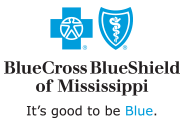
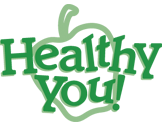
Healthy You! is about you and your health.
By visiting each year with your Healthy You! Primary Care Network Provider to know your health numbers, you can establish goals to manage your health risks, feel better and live a healthier life. Healthy You! can help you identify potential health issues before they become serious problems.
Taking ownership of your health and living a healthy lifestyle today will allow you to be healthier in the future. You and your Primary Care Network Provider will not only be managing your health, but also your future healthcare costs.
Talk with your Primary Care Network Provider about how to make these changes. Many times, it is possible to maintain a healthy cholesterol level through diet and exercise. If your provider does recommend a prescription drug, be sure to ask for a generic or lower-cost alternative."
Type 2 diabetes can be managed, or even prevented, by living a healthy lifestyle that includes a healthy diet and exercise.



Covered Services





























Once per calendar year
As part of preventive medicine evaluation or re-evaluation, preventive counseling as appropriate for age or stage of development and risk factors.
For ages 8 days through 35 months: 10 Visits
As part of preventive medicine evaluation or re-evaluation, preventive counseling as appropriate for age or stage of development and risk factors.
One wellness visit per calendar year
As part of preventive medicine evaluation or re-evaluation, preventive counseling as appropriate for age or stage of development and risk factors.
CBC performed at 12 months of age and once between ages 11-18.
Once per calendar year.
Once per calendar year.
Once per calendar year.
Annual glucose screenings are available for at risk individuals age 3-39.
At risk individuals are defined as follows:
• Family history of diabetes (i.e., parents or siblings with diabetes)
• Obesity
• Blood pressure of 135/80 or greater
• Race/ethnicity (i.e., African-Americans, Hispanic-Americans, Native Americans, Asian-Americans, or Pacific Islanders)
• Previously identified pre-diabetic or diagnosed diabetic
• Low HDL cholesterol or high triglycerides
• History of gestational diabetes
Once per calendar year.
Once per calendar year.
Lipid profile screenings are available to high-risk individuals between the ages of 2 and 17.
High-risk individuals should have their first lipid profile screening before age 11. A fasting lipid profile is the recommended screening method. High risk is defined as a family history of high lipids or early CVD; unknown history or other CVD risk factors such as overweight, obesity, hypertension or diabetes.
Once per calendar year.
A fasting lipid profile is the recommended screening method. High risk is defined as a family history of high lipids or early CVD; unknown history or other CVD risk factors such as overweight, obesity, hypertension or diabetes.
Once per calendar year.
Once every 3 to 5 years
Pap smears are available beginning at age 21.
For women ages 30 through 65 who wish to extend the time between pap smear screenings, a pap smear will be covered every 5 years when it is accompanied by HPV screenings.
For females 12-20, these services are available and may be covered under the appropriate medical portion of your benefit plan. These should be performed based on patient and provider discretion.
Pap smear screenings are not available after 65 years of age.
Once per calendar year
Pelvic Exams are available annually for women over the age of 12. These should be performed based upon patient and provider discretion.
Once per calendar year.
Mammograms are available for females ages 35 and older.
These should be performed based upon patient and provider discretion. Mammograms recommended every 2 years for ages 50-74.
Once per lifetime.
Once per calendar year.
Prostate cancer high-risk individuals are defined as follows:
• Between the ages of 40-49 and are African American, or have a father or brother diagnosed with prostate cancer at a young age
Once per calendar year.
Flexible sigmoidoscopy and colonoscopy recommended for ages 45-75.
Additional screenings (flexible sigmoidoscopy, colonoscopy) for individuals considered to be at high risk for colorectal cancer, as outlined below, may be covered under the appropriate medical portion of your benefit plan. High-risk individuals in this category are defined as follows:
• Strong family history of colorectal cancer or polyps (in first-degree relative younger than 60 or two first-degree relatives of any age). A first-degree relative is defined as a parent, sibling or child.
• Known family history of colorectal cancer syndrome
• Personal history of colorectal cancer polyps
Gastroenterology consultations prior to colonoscopy are not covered under Healthy You!

What is one way I can improve my health?
What is my goal weight?
Do you have my current list of prescriptions?
Are my screening tests up to date?
Do I need any immunizations?


Immunizations




(chronic liver inflammation, life-long complications)
(whooping cough)
Infections of the blood, brain, joints, or lungs (pneumonia)
(IPV)
(German Measles)
(Chickenpox)
Infections of the blood, brain, joints, inner ears, or lungs (pneumonia)
(Flu and complications)
(inflammation of the liver)
Birth to 9 Months (diarrhea and vomiting)
(Meningitis)
(Age 50 and older)
(Meningitis)
Infections of blood, brain, joints, inner ears or lungs (pneumonia)
Infections of blood, brain, joints, inner ears or lungs (pneumonia)
Infections of blood, brain, joints, inner ears or lungs (pneumonia)
Often, many medications can be used to treat a medical condition, and they can have very different prices. Search for medications on our secure myBlue Member portal to find cost-effective options to discuss with your doctor. The lower the category number, the lower your cost on prescription drugs.
Category 1
Generally includes low-cost generic and same brand-name drugs.Category 2
Generally includes higher-cost generic and many brand-name drugs.
Category 3
Generally includes brand-name and generic drugs and may have alternatives in Category 1 or 2.Category 4
Generally includes high-cost generic drugs, high-cost technology drugs and specialty drugs.-
Generally includes low-cost generic and some brand-name drugs.
Category 1
-
Generally includes higher-cost generic and many brand-
name drugs.Category 2
-
Generally includes brand-name and generic drugs and may have alternatives in Category 1 or 2.
Category 3
-
Generally includes high-cost generic drugs, high-cost technology
drugs and specialty drugs.Category 4
-
Category 1
Generally includes low-cost generic and same brand-name drugs.
-
Category 2
Generally includes higher-cost generic and many brand-name drugs.
-
Category 3
Generally includes brand-name and generic drugs and may have alternatives in Category 1 or 2.
-
Category 4
Generally includes high-cost generic drugs, high-cost technology drugs and specialty drugs.
Generic prescription drugs have the same active ingredients in the same strength as their brand name equivalents. They are regulated and tested by the U.S. Food and Drug Administration for their safety and effectiveness. Being RxSmart saves you money at the pharmacy.

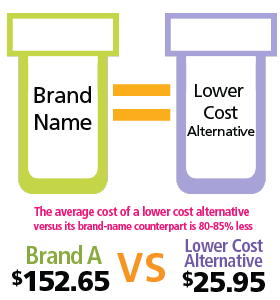

Health Benefits of Being Tobacco-free
The health benefits of being tobacco-free can last a lifetime and can help you live a longer and more productive life.
- Improved reproductive health in both men and women
- Whiter teeth and fresher breath
- Healthier skin with more elasticity
- Better sense of smell and taste
- More energy
- Reduced stress levels
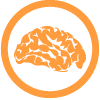
Nonsmokers are half as likely to be at risk for stroke. Stroke is a disruption of blood circulation to the brain that can cause death or significant disability.
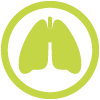
An estimated 8.6 million persons in the United States have serious illnesses attributed to smoking; chronic bronchitis and emphysema account for 59% of all smoking-attributable diseases. Being tobacco-free can increase lung capacity 30 percent or more, which makes everyday tasks like walking, exercise and taking the stairs easier.
 Smoking causes coronary heart disease, the leading cause of death in the United States. Cigarette smokers are 2 to 4 times more likely to develop coronary heart disease than nonsmokers. Normal heart rate and blood pressure promote good cardiovascular health.
Smoking causes coronary heart disease, the leading cause of death in the United States. Cigarette smokers are 2 to 4 times more likely to develop coronary heart disease than nonsmokers. Normal heart rate and blood pressure promote good cardiovascular health.

Nonsmokers are 10 times less likely to develop Peripheral Artery Disease (PAD). Peripheral Arterial Disease (PAD) in the legs or lower extremities is the narrowing or blockage of the vessels that carry blood from the heart to the legs.

The Brain
Nonsmokers are half as likely to be at risk for stroke. Stroke is a disruption of blood circulation to the brain that can cause death or significant disability.
The Lungs
An estimated 8.6 million persons in the United States have serious illnesses attributed to smoking; chronic bronchitis and emphysema account for 59% of all smoking-attributable diseases. Being tobacco-free can increase lung capacity 30 percent or more, which makes everyday tasks like walking, exercise and taking the stairs easier.
The Heart
Smoking causes coronary heart disease, the leading cause of death in the United States. Cigarette smokers are 2 to 4 times more likely to develop coronary heart disease than nonsmokers. Normal heart rate and blood pressure promote good cardiovascular health.
The Circulatory System
Nonsmokers are 10 times less likely to develop peripheral artery disease (PAD). Peripheral Arterial Disease (PAD) in the legs or lower extremities is the narrowing or blockage of the vessels that carry blood from the heart to the legs.





